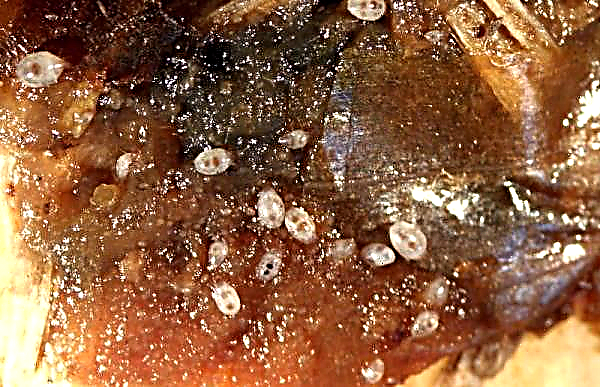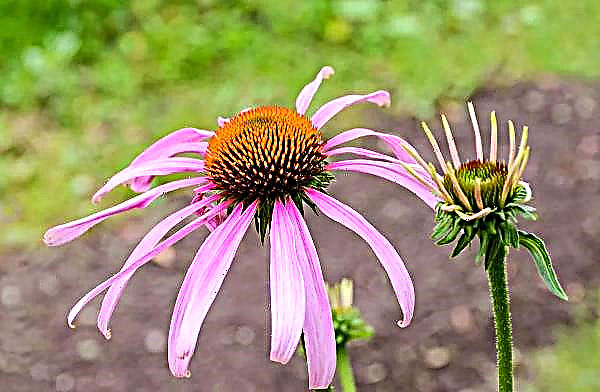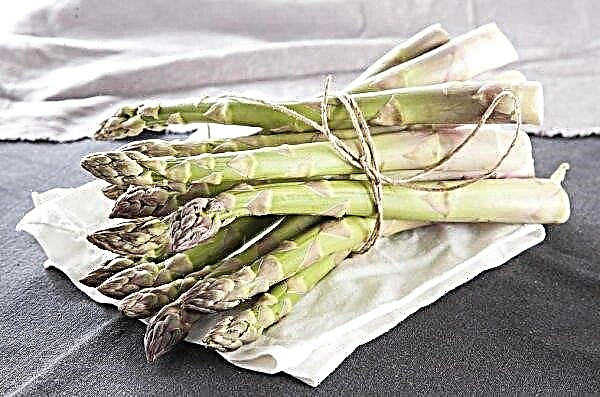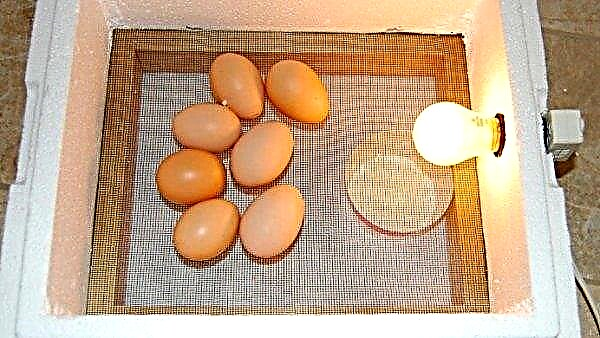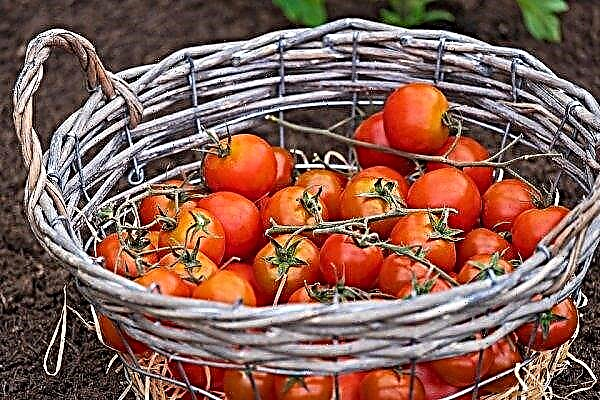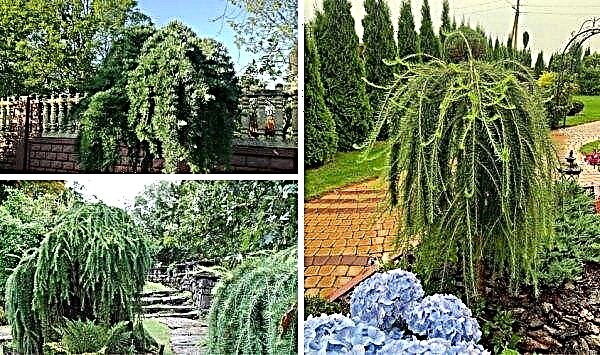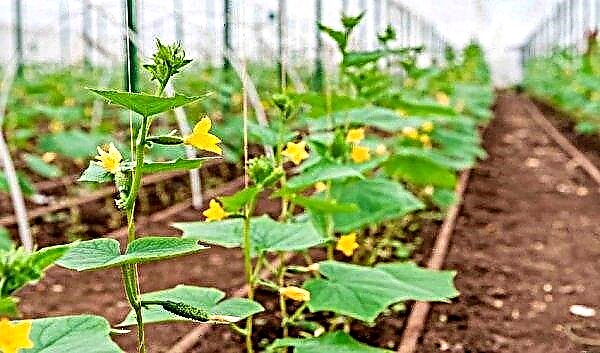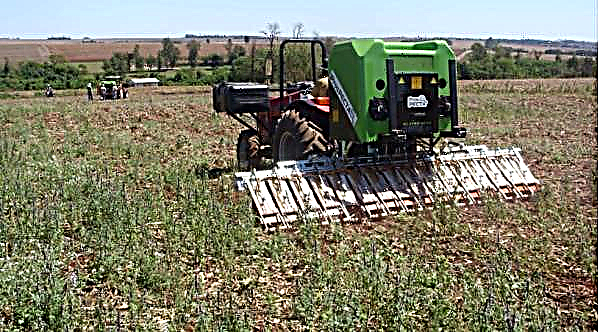Many gardeners are interested in varieties of cucumbers that would not require heavy care efforts. For them, we can recommend the Liliput variety, which is famous for its taste, universal use and undemanding in the growing process. Let's find out more about it.
Grade description
Since 2008, Liliput cucumber has been listed in the State Register of Selection Achievements, the originators are LLC “Research Institute for Vegetable Breeding” and LLC “Selection Company Gavrish”, S.F. Gavrish, V.N. Shevkunov, A.E. Portyankov, A.V. Shamshina.

The variety is approved for cultivation in the North, Northwest, Central, Volga-Vyatka, Central Black Earth, North Caucasus, Middle Volga regions. This hybrid can be grown in greenhouses under shelters due to the fact that pollen, consisting of male cells, is not needed for fertilization and fruit setting.
This is a same-sex plant; female flowers are pollinated by pollen of the same sex. In 1 knot there can be from 3 flowers. Branching is average, determinant lateral shoots may form. The size of the leaves is also medium, painted green, possibly with a touch of dark. The plant lives up to 60 days.
Fruit characterization
Let us consider in more detail the main characteristics of Liliput cucumbers.
Fruit use
The ovaries of this variety are located in a beam-like fashion; in 1 leaf sinus there can be from 3 to 10 ovaries. Since the variety is hybrid, collecting seeds for planting from the obtained crop will not work. Fruits can be preserved or salads can be made with them. Good as gherkins and pickles. Great taste and pleasant smell make them attractive for consumption.
Productivity
From 1 m² you can collect 10.8 kg of cucumbers (maximum - 11.5 kg) with excellent taste, weighing 85 g and a diameter of up to 3 cm each. They are all short (about 7–9 cm), cylindrical in shape, painted in different shades of green — dark at the base, lighter at the top. Covered with dense white pubescence, there are short stripes and medium-sized tubercles with white spikes.
Did you know? The problem of preserving the freshness of cucumbers has been dealt with for a long time, while the French emperor Napoleon Bonaparte promised a great reward to the one who will solve this problem.
Disease resistance
The plant is not exposed to diseases:
- cladosporiosis (olive spotting);
- powdery mildew;
- root rot of various types;
- downy mildew (peronosporosis).

Advantages and disadvantages
- The advantages of the Liliput variety include:
- earlier ripening of the crop;
- good fruiting;
- excellent taste without bitterness;
- attractive smell;
- nice appearance;
- universal use;
- you can collect pickles and gherkins;
- high resistance to diseases;
- suitable for transportation;
- does not need pollination;
- calmly tolerates poor-quality care during the growing process;
- suitable for cultivation by inexperienced gardeners;
- determinant variety;
- can be grown in open ground and under shelter.
- The disadvantages of these cucumbers include: s
- seeds for future planting cannot be collected on their own;
- suffers from temperature changes;
- cannot be stored for a long time;
- deterioration in presentation of the fruit during irregular harvesting, although yellowing and barrel-shaped thickenings are absent.
Features of sowing and growing
The technology for growing in open ground and greenhouses for cucumbers Liliput is slightly different.
Did you know? Cucumbers are grown for about 6 thousand years, it is known that among the objects that the ancient Egyptians put in tombs during the burial of the pharaohs, there were cucumbers.
In the open ground
In the open field, cucumbers are grown by direct sowing or through seedlings.

In order to grow a variety in open ground, you must:
- Choose on a flat surface or a small hill a sunny, sheltered from through winds place, which does not fall shadow. The soil here should not be too acidic or too heavy, slightly acidic or neutral soil is allowed.
- It is good to plant cucumbers after potatoes and other table root vegetables, tomatoes, and legumes.
- It is recommended to plant tall plants around to protect against wind.
- To improve the structure of the soil, you need to make manure, humus, peat, sawdust, cut straw, coarse sand, mineral fertilizers.
- When planting seeds in open ground, dig holes according to the scheme 50 × 50 cm, water.
- Put the seeds.
- Pour a layer of soil.
- Pour a layer of peat. Some cover with film or glass for protection.
- When growing through seedlings, seeds must be planted 20–25 days before planting in open ground (approximately at the end of April). To do this, dig grooves 4 cm deep at a distance of 25 cm from each other, pour. Also, they can be planted in separate pots, so that it is more convenient then to transplant.
- In the grooves with an interval of 2-3 cm put the seeds.
- Sprinkle with soil.
- When seedlings appear, thin out, leaving at least 6 cm of space between the plants.
- A few days before planting, gradually accustom seedlings to street conditions, taking them out into the open air.
Landing in open ground is carried out in late May - early June.
Important! The date of planting of Lilliput cucumbers in open ground is determined by the temperature of the soil, it must be at least +16...+18° C.
Landing in the greenhouse
In a greenhouse, it is recommended to grow cucumbers through seedlings, if you want to grow seeds, plant sprouts. The sowing of Liliput seeds takes place in late April - early May, they are also planted as described in the previous paragraph.
In late May - early June, you can plant seedlings under shelter. At this moment, there should be 2-3 real leaves on it. To do this, dig holes with a depth of about 10 cm, pour humus, compost, peat, 5 g of superphosphate and potassium salt into it, and pour 0.5 l of water.

Do not be alarmed if a swamp forms - it should be so. There you need to transfer the young plant along with the ground and sprinkle with soil. It is highly advisable to mulch peat on top to protect against crusting on the ground.
Care Features
Liliput cucumbers need watering, top dressing, measures to care for bushes and soil.
Frequency of irrigation and fertilizer
The frequency of watering depends on the drying rate of the soil. Water for irrigation needs warm, it is better to use the drip method of irrigation.
Water consumption per 1 m² is recommended as follows:
- Before flowering - 6 liters in dry weather or 4 liters in rainy.
- After flowering - 9 liters in dry weather or 6 liters in rainy.
 Do not water cucumbers in the evening if you do not want the water to freeze the bushes at night.
Do not water cucumbers in the evening if you do not want the water to freeze the bushes at night.
Fertilizer is applied twice:
- Before flowering, nitrogen and potassium are used.
- During flowering, ash, urea solution, phosphorus are used.
Garter and bush formation
In order for the Liliput cucumbers to give a good harvest, they must be tied to a support or trellis. Install them before planting seedlings.
Trellis for growing this variety is a more suitable option. It is a wire or cord stretched along the beds at a height of 1.5–2 m. A few days after transplanting, it is tied to the trellis with twine without tension, wrapping around 10-15 cm from the ground. The loop around the bush should not be tight so as not to damage it.

It is not necessary to pinch the growing bush, however, if there are strongly developed lateral shoots that get confused and close the light, they are cut off.
Soil care
Weeds take nutrients from cucumbers, so they must be removed. So that in future they do not appear again, the soil around the bush is mulched with peat. It is necessary to ensure that after watering around the bush an earthen crust does not form, which does not allow the root system to breathe, so the earth needs to be loosened.
Prevention and control of diseases and pests
This variety is resistant to diseases, but insects can harm the plant:
Insecticides are used to combat them.
Common preventive measures are:
- harvesting all plant residues after harvesting;
- crop rotation compliance;
- disinfection of the greenhouse and equipment;
- compliance with the rules of agricultural technology.
Harvesting and storage
Harvesting cucumbers of this variety can be from 40 days from the moment of full germination of seedlings. If pickles are needed, the crop is harvested daily, if gherkins - every other day.
Important! If you harvest irregularly, cucumbers thicken.
The crop is not stored fresh for a short time, about 4 days in the refrigerator.
In this case, the temperature should not be lower than 0 ° C. To extend the shelf life, you can:
- Wrap each unwashed cucumber in a paper towel and put it in a plastic bag, which is placed open in the refrigerator.
- Wrap all cucumbers with wet gauze and put in a plastic bag, which is placed in the open in the refrigerator.
- Arrange in 1 row with tails down in a bowl or other utensil, pour cold water so that it covers no more than 2 cm of cucumber, and place in the refrigerator. Drain and refill daily.
- Wash the washed cucumbers thoroughly and coat with egg white, then place in the refrigerator.
Thus, the Liliput cucumber variety is ideal for gardeners who do not want or cannot spend much time on caring for plants. It resists diseases well, provides a rich harvest, matures quickly, and can be grown in open ground or in hotbeds. He will please the housewives with excellent taste and the ability to preserve several jars of pickles or gherkins for the winter.


